Well . . . I guess it’s time to put a certain theory to pasture.
And it’s all because of these two.

Who are they? I’ll get to that.
What theory? Oh, I had this hypothesis that tea and dating (or courtship, whatever) didn’t “blend”.
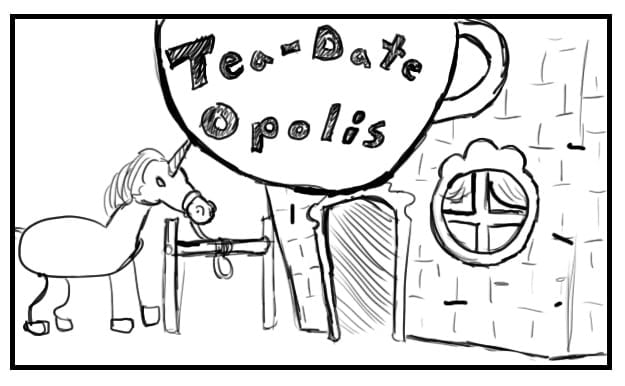
It never worked for me. So, how could it work for other people? Sure, there were statistical outliers, but they were few and far between. However, in early 2015, I . . . amended that theory. Tea and dating may not work, but tea and relationships were all well and good. Tea just didn’t serve a useful purpose during the initial courtship.
Well, since then, I’ve heard far too many cases to the contrary to even hold onto that amendment of the theory. Tea and courtship worked just fine. What was important was (a) who you were courting with tea, (b) whether or not they had an interesting in the subject as well, and (c) what kind of tea the two people bonded over.
Which brings me back to the couple at the intro.
They are Cassandra Pedrotti and Jeffrey Cleary. (Yes, I’m doing my best to not judge him for spelling his name wrong.) I first encountered Jeff through Instagram. Other than mutual reciprocity of “likes” on tea-porny photos, we never really exchanged so much as three words.
The reason? Well, honestly, I was afraid to. He looked like one of those guys that would sneer at me for spelling “puerh” wrong. (And, no, I don’t care if the original pinyin doesn’t have an “h”. I like the “h”. Piss off, pu-heads!)
Anyway . . .
We became “Facebook friends”, and I kept a casual third eye on his updates—seeing if there was something more to him besides unusual tea acrobatics.

One day, Jeff advertised that the new website was done for his (and his fiancée’s) new tea company—UNYTea. Wait, what? When the heck did that happen? I thought. Maybe I should’ve been paying better attention back then.
I took a look at their wares. Half of me expected it to be yet another trendy blending op. I mean, there’s nothing wrong with trendy blending ops, per se. But there was just so . . . bloody . . . many . . . of them! And if it was a monthly subscription service, I was completely out the door—running, not walking.
Imagine my surprise when I saw that—sure, they did have a section for blends— but they were also orthodox tea oriented, and—not only that—they carried things that made my eyebrows perk. It takes a lot to make ‘em perk these days. In this case, Jin Xuan. Bug-bitten Jin Xuan.
What’s the big deal about Jin Xuan (translation: “Golden Daylily”)? Well, two things. One, it’s a really nifty Taiwanese cultivar. And secondly, sometimes it’s considered the Taiwanese answer to the Chinese “milk oolong” claim. That being? When leaves from this cultivar of tea bush are harvested during a particular part of a season—amidst a major temperature drop—the leaves are blessed with a milky/creamy taste.
To date, I had yet to encounter this. Most Jin Xuans had buttery/floral notes, sure. But full-on “milk oolong”-y goodness? Nope. The only ones that ever came close were milk-scented knock-offs. (Cheaters.) That isn’t to say I gave up on encountering one, though.
The idea of a bug-bitten Jin Xuan oolong simply blew my mind. A buttery-noted tea tree cultivar being subjected to leafhopper bites, which—in turn—lead to a honey taste to the leaves? Sign me right the eff up. Jeff also agreed to throw in their standard Jin Xuan for comparison’s sake.
Of course, I had to ask Jeff the obvious . . . uh . . . “Geoff”-like question, “Are your standard Jin Xuan and Bug-Bitten Jin Xuan from the same farm?”
He confirmed they were, and I bought the bug-bitten seconds later. Jeff also gave me a little more info on the farmer. Apparently, the farmer in question hailed from Yonglong village, nestled on Dong Ding Mountain. Yeah, a tea farmer on Dong Ding Mountain that wasn’t focused entirely on Dong Ding oolongs.
A week later, the oolongs arrived. I dived into them a week or so after that.

For brewing, I approached these as one would expect: Gongfoolish style. I used roughly 5 grams (or a teaspoon) of balled leaves per gaiwan, and then used just-off-the-boil water for each steep. Each infusion was thirty-to-forty seconds.
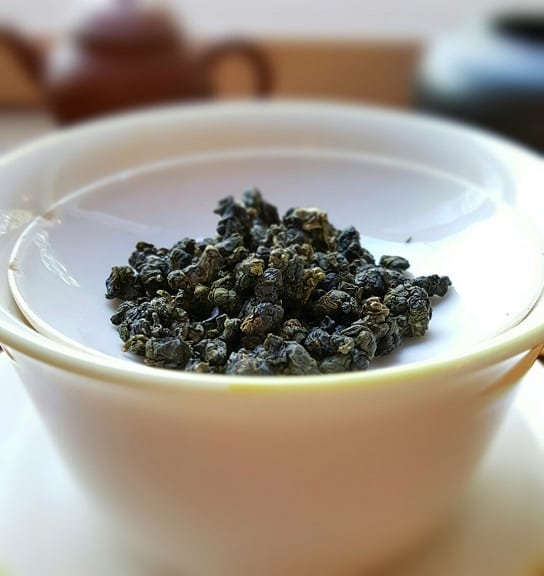
The leaves for the standard Jin Xuan looked like every other Taiwanese oolong—green, beige and purple in color—ball-fisted tightly with a little “necktie” of stem hanging out. The aroma they gave off wasn’t so standard, though. I whiffed butter and flowers, but it was a slightly sweeter scent than one would get off of a standard Shan Lin Xi or Baozhong. It also had that residual “popcorn”-y aspect to the scent that made me think of the Fujian variant on the “milk oolong” concept. Maybe this was a Jin Xuan that delivered on the “milk” promise?
For the first, thirty-second infusion, the liquor brewed up fairly clear—no deeper than a Chinese green tea.
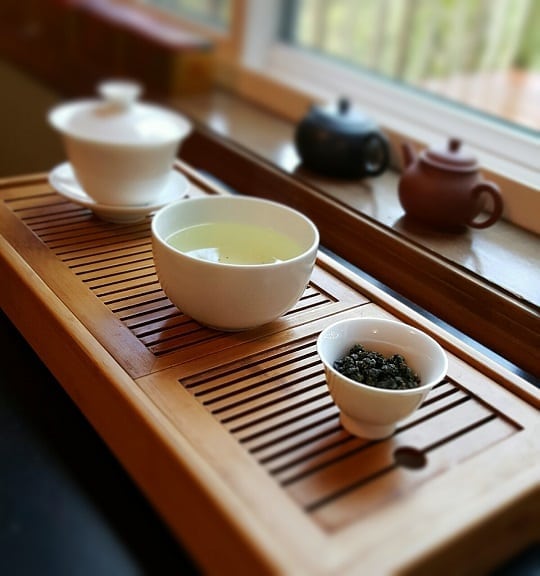
However, the aroma was robust and the steam gave off an impression of . . . almond milk? That’s awesome. I love almond milk. The flavor was not nearly as robust as the scent, but still possessed a soothing texture and taste felt like a warm cup of milk after a really bad day. It was certainly the creamiest Jin Xuan I’ve ever encountered by far.
Further infusions did something really strange.
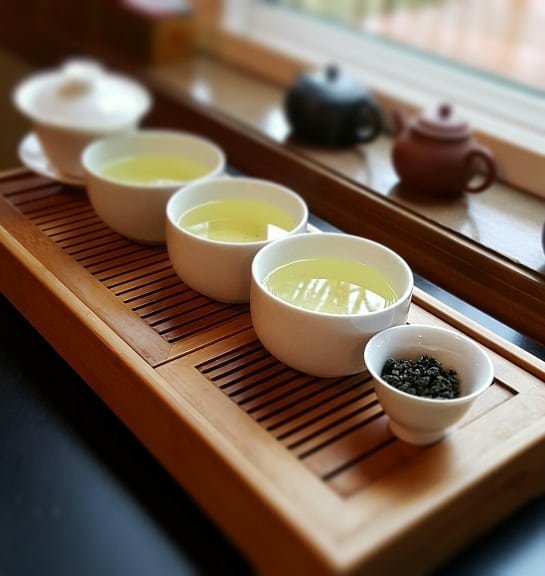
The more I steeped, the nuttier they got. No, literally nutty. As in, the flavor started off with that creamy texture/milky taste, but the almond-like aspect grew more pronounced with each steep. Especially once I notched the steep time up ten seconds. Not a bad thing in the slightest, quite welcome actually, just unexpected. I didn’t expect a nutty Tie Guan Yin characteristic in my cup o’ Jin Xuan
In short: Yeah . . . this was the first untampered-with Jin Xuan oolong I’ve ever encountered that deserved the “milk oolong” label.

While the leaves were ball-fisted the same way as the standard Jin Xuan, the similarities ended there. Their color palette ranged from red to brown, indicating a much higher oxidation level—65% or more. Some of the milk-buttery aroma—indicative of Jin Xuan—was there, but there was a lot more going on. I smelled honey, nuts and oats. Yes, this smelled like breakfast cereal for eight-year-olds. And I was stoked! It reminded me of a highly oxidized Mi Xian I tried a while back.
The liquor for the first infusion was almost the same color as the regular Jin Xuan, save for the fact that it seemed . . . rustier. Or more rustic, would be a better word?
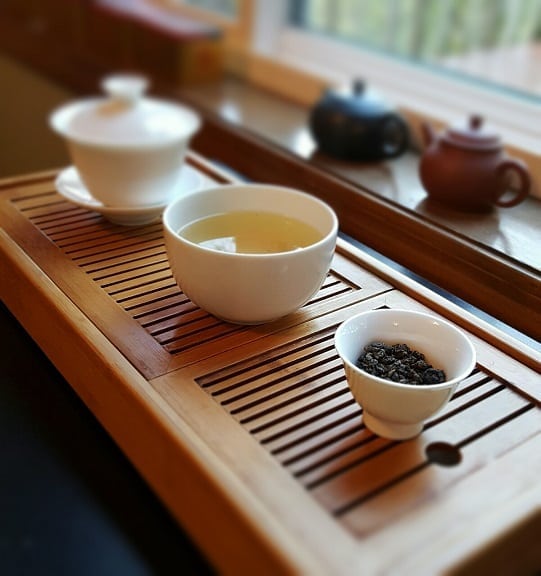
Whatever, it was darker. The smell it gave off was like a hybrid between a plum and an apricot. (A plumicot? Aprilum?) Stone-fruity with a side of tropics. It was more emboldened than an Oriental Beauty, but sweeter-seeming than a Gui Fei. The taste, however, blew any such comparisons out the window . . .
There was a tartness at the forefront that reminded me of a Dan Cong, but that disappeared just as quickly as it arrived. The rise to the top note was all fruit-filled fantasy, and the middle was all honey and Greek wilderness. The downhill slide to aftertaste was like a waterslide bathed in cream. And . . . !
Oh yeah . . . I still had more infusions to do. Wheeeeee!
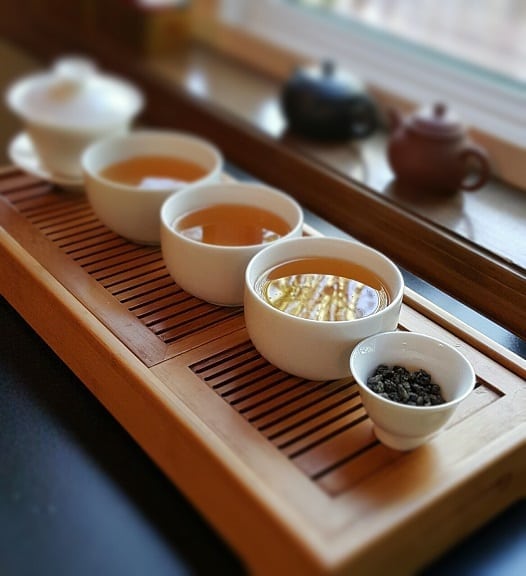
Further infusions took on a life of their own. They started off in fruity fun-time territory, but then moved on to include more of that honey-nut aspect that showed up in the top note on the first go. The further I went, the more honey came out. Longer steeps brought out more honey and cream, echoing the vendor notes of “honey milk”. It was basically like someone had taken an Oriental Beauty and made it into a latte. I would take that one step further and say it was an apri-plum tree that was made of honey-milk instead of sap.
Was there a favorite? As is becoming far too common, lately, no. Both were two different shades of awesome. On one side, I had a Jin Xuan that actually lived up to “milk oolong” moniker. On the other? A milk oolong dipped in fruit-flower honey. I’m not a very decisive guy under normal circumstances. A selection like this is pure torture. So, no, no favorites. Both are equally fantastic in opposite ways.
As I prepared for this write-up, I queried Jeffrey more on the formation of UNYTea. He mentioned that he and Cassandra both met because of tea. He was a barista, and she was a manager at the same venue. Their first date was at a teashop, and he proposed to her . . . outside of a tea house.
That revelation singlehandedly killed my “tea and dating” theory. Done. Dead.
Throughout that entire exchange, I kept thinking back to an old Great White song—“Once Bitten, Twice Shy”. The title stems from an old English proverb, which—in turn—was inspired by an Aesop fable: “The Cat and the Mice”. As the saying goes, an unpleasant experience leaves one cautious to similar experiences again. That pretty much summed up my thoughts on tea and romance. Perhaps I’d been looking at it all wrong until lately.
Sure, once bitten, twice shy. But what about, “Once bug-bitten . . . ?”

Then all bets are off. Just let that Leafhopper o’ Love do its thing. Cheesy? No . . . more like buttery.
To buy their standard Jin Xuan, go HERE.
To buy their Bug-Bitten Jin Xuan, go HERE.
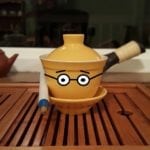 Editor Skippy: Since the publication of this article, a few readers have informed us that apricot-plum hybrids are indeed a “thing” . . . and they are called “pluots”. However, we’ve elected to NOT change the above narrative on the grounds that “pluot” sounds inappropriate . . . and that totally makes us giggle. We appreciate your understanding.
Editor Skippy: Since the publication of this article, a few readers have informed us that apricot-plum hybrids are indeed a “thing” . . . and they are called “pluots”. However, we’ve elected to NOT change the above narrative on the grounds that “pluot” sounds inappropriate . . . and that totally makes us giggle. We appreciate your understanding.
Hehe . . . pluot.
Leave a Reply